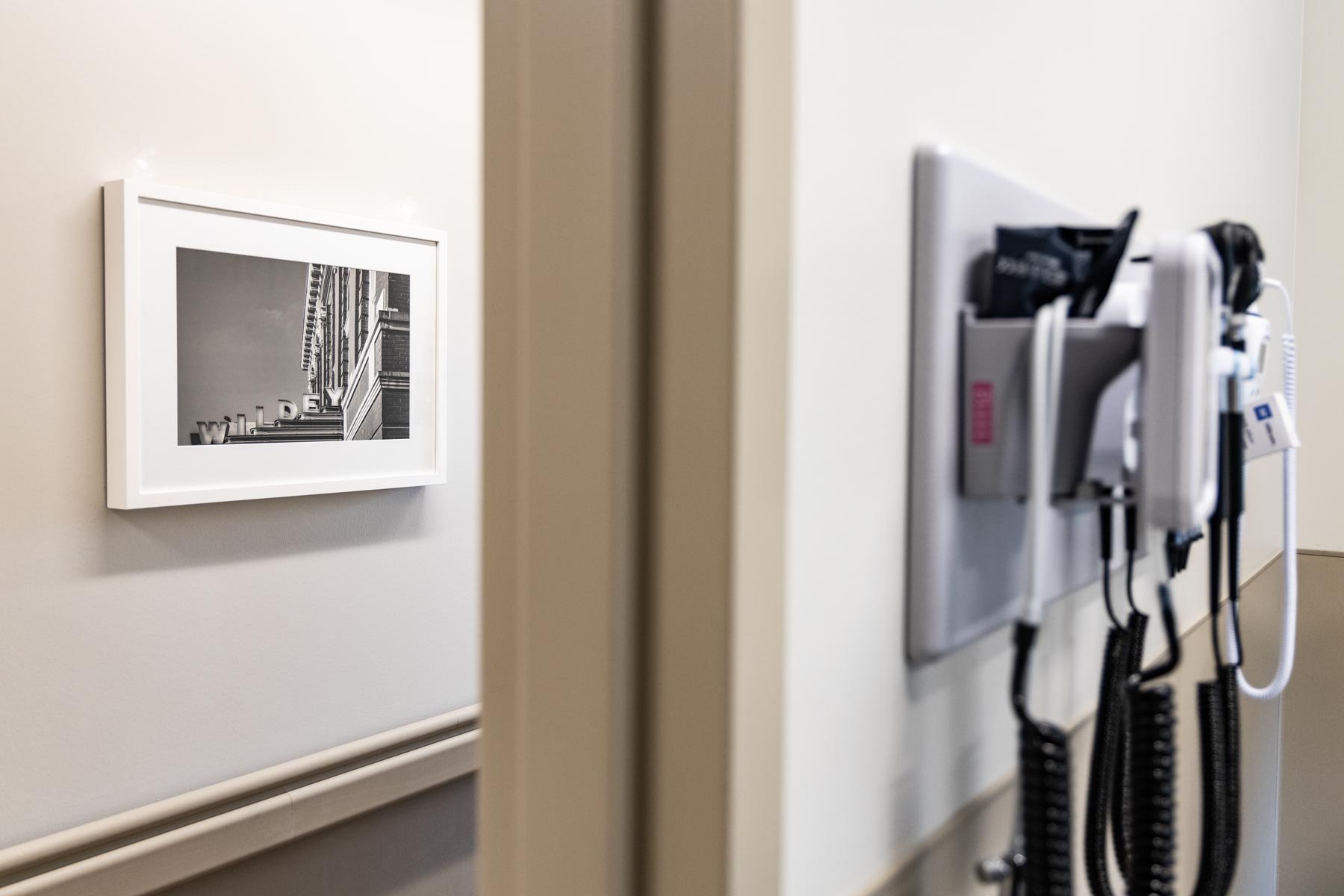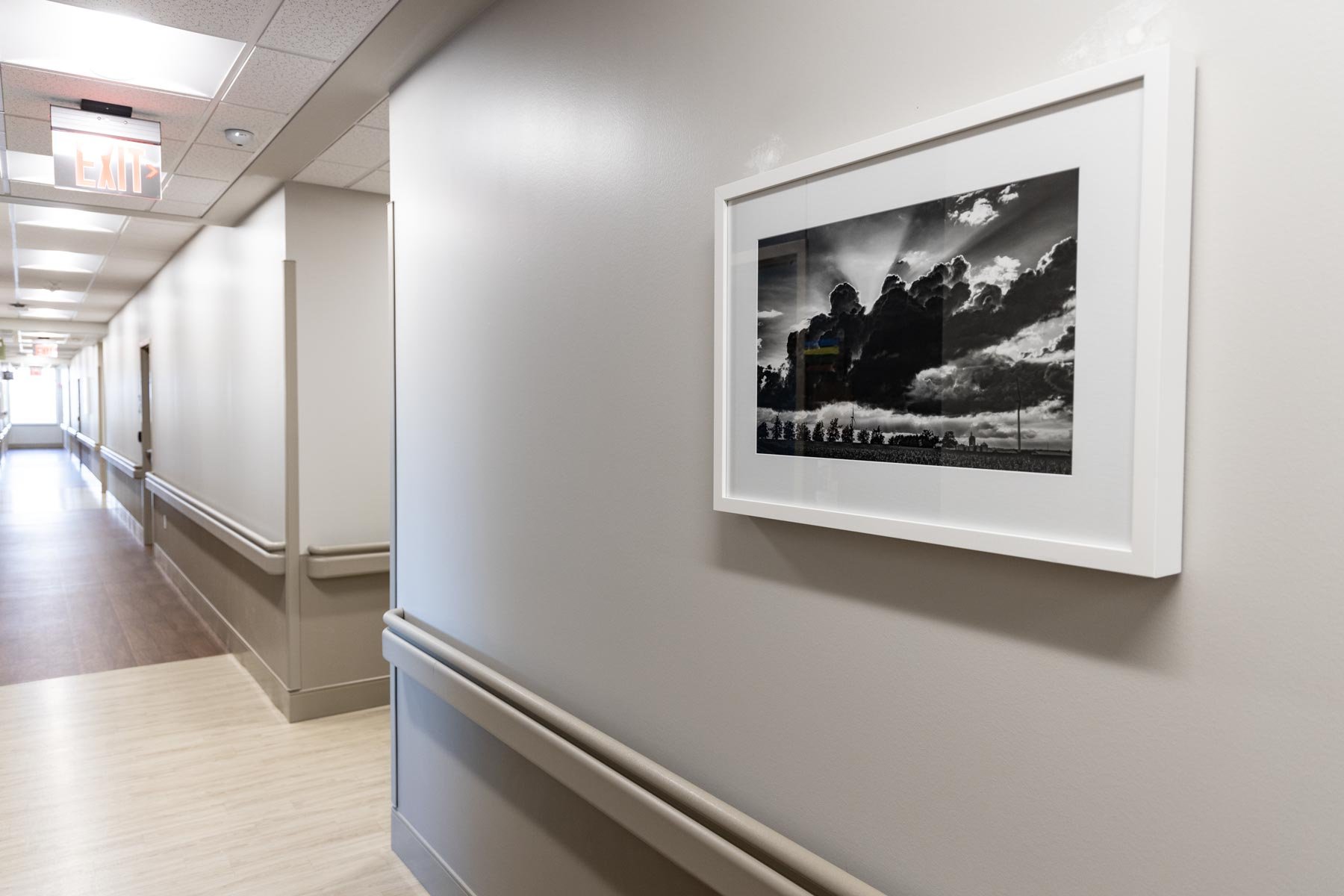Steve Hartman Art photography can be found in this Healthcare Physicians space in Edwardsville, Illinois.
In today's world, where trends and styles are constantly changing, it's important to create designs that stand the test of time. And when it comes to interior design, there's one timeless trend that never goes out of fashion: black and white photography.
Black and white photography is a classic art form that has been around for centuries. It has been used in various settings, including corporate, hospitality, and healthcare environments. This type of photography has a timeless quality that gives any space an air of sophistication and elegance. In fact, black and white photography can transform any interior design solution, turning a bland and uninspiring space into one that is striking and memorable.
The use of black and white photography in corporate environments is a perfect example of how this art form can make a space more dynamic. Black and white photos can be used to create a sleek and professional atmosphere that inspires creativity and productivity. It's a great way to showcase company history, achievements, and employees. Black and white photos also add depth and character to a space, making it more inviting and engaging for clients and visitors.
In hospitality settings, black and white photography can be used to create a sense of nostalgia and charm. Hotel lobbies, restaurants, and guest rooms can all benefit from the addition of black and white photographs. They can create a relaxed and welcoming environment that makes guests feel at home. Whether it's a vintage photograph of a city skyline or a portrait of a famous musician, black and white photography can create a unique and memorable atmosphere that sets a business apart from its competitors.
Black and white photography is also an effective way to create a calming and soothing environment in healthcare settings. It's a great way to add a touch of warmth and humanity to sterile and clinical spaces. Black and white photographs of nature or calming scenes can create a peaceful atmosphere that helps patients and visitors feel more at ease. They can also provide a distraction for patients during long waits, making their experience more comfortable and enjoyable.
In conclusion, black and white photography is a powerful tool that can transform any interior design solution. It has a timeless quality that adds depth, character, and sophistication to any space. Whether it's a corporate office, a hotel lobby, or a healthcare facility, black and white photography can create an atmosphere that is engaging, inspiring, and memorable. It's a design trend that will never go out of fashion, and one that should be embraced by all designers looking to create effective interior design solutions.
Black and White photography in Healthcare Settings
According to a study published in the Journal of Health Design, black and white photography has been found to have a positive impact on patients in healthcare settings. The study found that black and white photographs of nature scenes, in particular, had a calming effect on patients, reducing anxiety and stress levels. This effect was observed across a range of healthcare environments, including hospitals, clinics, and long-term care facilities. The study also found that patients who were exposed to black and white photography reported a more positive overall experience during their stay. These findings provide further evidence for the effectiveness of black and white photography in healthcare design.
Multiple black and white photos of local landmarks are found in the hallways in this physicians building in Edwardsville, Illinois.
From Architectural Digest "Why Black-and-White Photography Is an Essential Part of Any Corporate Space"
The article highlights the effectiveness of black and white photography in creating a sophisticated and professional atmosphere in corporate environments. It discusses how black and white photos can add depth and character to a space, making it more engaging and inspiring for clients and employees. The author also notes that black and white photography can be used to showcase a company's history and achievements, as well as to feature employees and their work.
The article features examples of how black and white photography has been used in real-world corporate settings, including a law firm's reception area and a media company's conference room. In both cases, black and white photos were used to create a sleek and professional atmosphere that reflected the company's values and brand.
The author emphasizes that black and white photography is a timeless trend that will never go out of fashion. It is a design element that can easily be incorporated into any corporate space, from a small start-up office to a large corporate headquarters. The article concludes by stating that black and white photography is an essential part of any corporate space, providing a powerful and effective way to communicate a company's values, culture, and identity.
Black and White photography can send a powerful and inspiration message.
"There are always two people in every picture: the photographer and the viewer."
- Ansel Adams
Evidence-based art used in healthcare settings is not always the solution
It is important to note that while evidence-based art has gained popularity in healthcare settings, it is not a universal solution for all patients or settings. There are some arguments against evidence-based art that should be considered.
Firstly, the concept of evidence-based art assumes that all patients will respond positively to the same visual stimuli, which is not always the case. While some patients may find certain art styles or images calming or uplifting, others may find them uninteresting or even distressing. Therefore, evidence-based art cannot guarantee a positive experience for all patients.
Secondly, the use of evidence-based art may overlook the individual preferences and needs of patients. For example, a patient who enjoys abstract art may not respond as positively to nature scenes, even if they are considered evidence-based. By limiting the art choices to a narrow set of evidence-based options, patients may be denied access to artwork that resonates with them personally.
Additionally, the cost of implementing evidence-based art programs can be high. Hospitals and healthcare facilities may have limited budgets and resources, which may make it difficult to implement such programs. The cost of acquiring, installing, and maintaining artwork can add up quickly, potentially diverting funds from other essential areas of healthcare.
In conclusion, while evidence-based art can be beneficial for some patients, it is not a one-size-fits-all solution for healthcare settings. Healthcare providers should also consider the individual needs and preferences of their patients when implementing art programs. Ultimately, the goal of any healthcare facility should be to create a calming and positive environment for patients, and this may involve a variety of art styles and approaches, not just those that are evidence-based.



